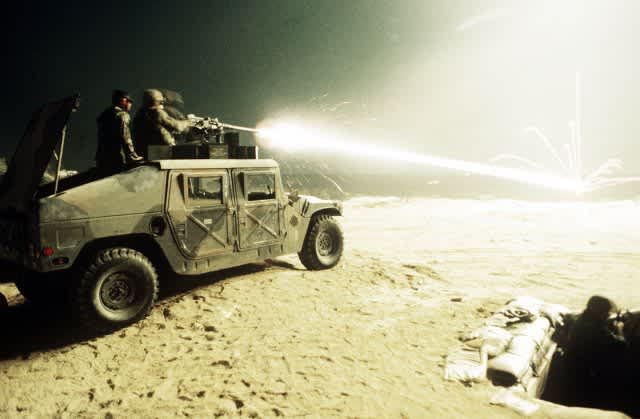US Army Researching Improved “One-way” Tracer Rounds
OutdoorHub Reporters 08.05.14

The US Army recently announced that the preliminary development of a safer and more accurate tracer round is underway. Tracer rounds, or bullets that produce a highly-visible “streak” when shot, help soldiers adjust their aim in the heat of combat and can be used by squad leaders to pinpoint targets on the battlefield. Unfortunately for the user, tracer rounds also reveal the shooter’s location.
US Army engineers at Picatinny Arsenal in New Jersey have come up with a solution: tracer rounds that can only be seen by the shooter. Called One-way Luminescence (OWL) rounds, the new tracer bullets would no longer rely on burning pyrotechnic material but a safer luminescent compound that engineers described as “like a glow-in-the-dark sticker.”
“The ultimate goal is to replace the tracer rounds with the OWL rounds and, potentially, put OWL on the back of every ball round,” said the program’s Quality Assurance Lead, Christel Seitel.
Ball rounds are general-purpose cartridges used by the Army and other branches of the US military in their small arms. Little to no material is ejected from an OWL round, unlike current pyrotechnic tracers, so the new technology will have little effect on a traditional ball round’s ballistics. Tracers that burn pyrotechnics lose weight as the material is consumed, so they are seen as less accurate. On the other hand, scientists are having trouble finding materials that are as bright as the current tracers for the same reason.
“Finding something that burns brighter than the sun is difficult,” Seitel said. “You want to have something that’s bright enough to give you that contrast [with the background].”

In addition to the engineers at Picatinny Arsenal, the Army will be seeking prototype designs from ordnance development firms.
Due to the lack of pyrotechnics, Seitel expects that the new tracers will also be safer to produce.
“Currently, the pyrotechnics have a separate wing in manufacturing plants due to safety concerns. But if you can just make your bullets and then paste something on the back, you won’t have the costs of special handling,” Seitel explained.
The “sticker” is one of many new tracer concepts being explored in the program, which is expected to transition into engineering and manufacturing by fiscal year 2017.

